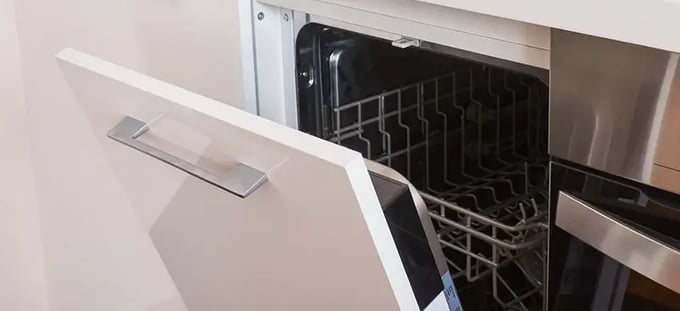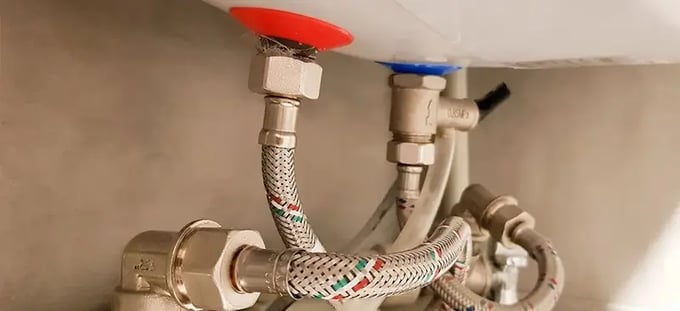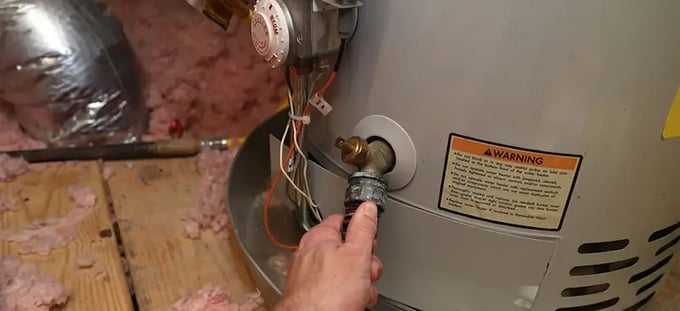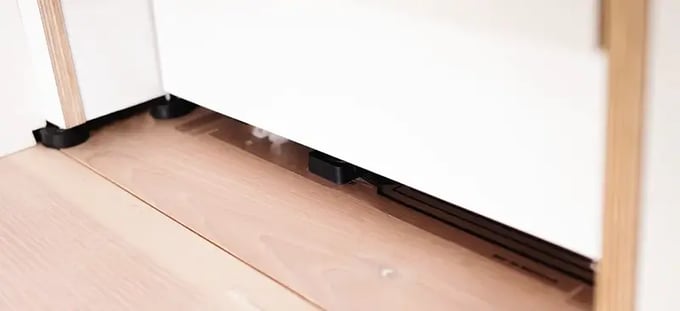Water leaks are a serious issue
In the US, leaks can waste over one trillion gallons of water annually. Every day, 14,000 Americans experience a water damage emergency.
1 in 50 US homes makes a water claim each year. This puts a huge strain on the annual insurance payouts, amounting to US$13B.
The payouts for water leaks come with added detriments. Homeowners and utility providers suffer from damage to surrounding property and higher water bills. Dealing with secondary effects such as mold is also a factor.
Currently, the smart home industry is booming, addressing key issues such as home security, air quality and energy usage. Smart-home devices usually take a proactive approach. They predict and inform the homeowner of changes to keep them in control and one step ahead.
This water leak repair is unusual. Usually, action is taken only after someone spots drops of water or a burst pipe.
This presents an opportunity for a home water monitoring system to detect and prevent leaks at an early stage. While there are currently leak detectors such as internal or spot water detectors, these can require intrusive and expensive installations. Requiring cost-effective and discreet solutions that detect leaks early is therefore integral in ensuring its value for homeowners.
Water leaks vary significantly in the home. Examples include dripping pipes, leaking toilet valves, and burst hot water tanks. We have analyzed three common leaking situations that differ in context. Our analysis shows that current sensors may not be practical.
It is essential to comprehend the complexities of different water leaks. Doing so will enable us to create an IoT water leak system that benefits homeowners, insurance companies, and utility providers.

More homeowners are buying built-in dishwashers
Dishwashers present faster, more hygienic and water-efficient cleaning that is estimated to use 25% less water than hand-washing. It is not surprising that 59% of Americans own a dishwasher. The global dishwasher market size is projected to reach US$10.23B by 2025.
Dishwashers provide efficient performance. To cope with larger loads, higher temperatures and water pressures are required. This harsher environment can cause degradation and leaking of dishwashers.
The extent of a dishwasher leak can be unpredictable as many gradual leaks can suddenly turn into major ones. Spotting early signs of a leak is difficult, especially with concealed built-in units, which are becoming more popular. Even before locating the source of the leak, this challenge is significant.
Built-in dishwashers have advanced features and they are also smaller in size. This makes it easier for homeowners to not notice possible issues. Not knowing how serious a leak is can therefore discourage them from seeking professional advice.
Furthermore, dishwashers are usually fitted next to valuable countertops and kitchen appliances which can cause unexpected secondary damage. Not detecting early signs of sudden leaks can lead to higher payouts from insurance companies. High-value furnishings can also increase the potential for larger payouts.
What leak detectors are available?
Before we move on, we will introduce the various water leak detectors available on the market. This will help us to identify any gaps in function and form.
Firstly, internal leak detector sensors operate by monitoring the internal pipeline parameters (e.g. flow or pressure) and require a device to be installed within someone’s existing pipeline. Internal sensors eliminate the need for installation in a restricted area near a dishwasher. However, they cannot identify the source of the leak.
There are two main categories of water detectors. The first is spot water detectors. These are placed next to potential sources of leakage, such as a toilet or a pipe. Usually, these devices have one or more probes.
When the probes come into contact with water, they send a signal to a centralized hub. This signal informs the hub that there is a leak.
Current home leak detection systems typically use palm-sized probes. These probes must be placed strategically, so water has the opportunity to get underneath them. This is simpler for larger leaks that spread. However, a more compact dishwasher may make it difficult to identify the exact location of the probes.
Other than the actual water sensor, how the device alerts the homeowner of a leak is another essential feature. Commercial water leak detectors employ various solutions, such as sound alerts and Bluetooth-connected apps. However, these technologies are not energy-efficient or dependable if people are not home.
What is emerging is the use of Low-Power Wide-Area Networks (LPWANs) for example LoRaWAN. These are battery-efficient, long-distance, and easy-to-setup networks perfect for the water leak sensor.

Weak points in a sink: small to sudden leaks
Sinks, whether in the bathroom or kitchen are another well-known area of leakage. Similar to dishwashers, sink pipes are usually hidden in fitted units which makes it hard to notice the first signs of a leak.
Leaks can start with just a wet pipe surface. This is especially true when it comes to long-term wear such as corrosion or valve loosening. Leaks this small can be felt when touched. However, they may be too slight for an internal leak detector sensor to detect.
Spot leak detectors may have difficulty detecting a detectable amount of water. This is because the detector needs to be placed on an unobstructed surface below.
What makes sink leaks even more conspicuous is that their water performance can appear unchanged despite a large leak. Being unaware of this excess water can damage surrounding furnishings and encourage mold to grow- particularly in moist rooms like the bathroom.
Components of sink fittings and pipes further introduce a wider range of potential leak types whether from a loose drain or a clogged P-trap. Considering there are these weak spots that could have easy or more extensive repairing, regular checking and maintenance are necessary.
It is unrealistic to expect households to constantly check under-the-sink piping. This is because cramped spaces may discourage them. Ignoring leaking pipes, though, can lead to major incidents like burst pipes which can leak as much as 400 liters (around two bathtubs) an hour.
Depending on the severity and nature of the leak, households can receive large insurance payouts for the secondary damage. However, most home insurance policies do not cover leaks associated with poor maintenance, so homeowners can take a lot of this cost by themselves. This puts a large value on detecting leaks early.

Hot water tank leaks can be the most costly to repair
Leakage from a hot water tank is typically the costliest type of repair. On average, the cost to repair is around US$1,000.
Corrosion at the bottom of a tank is a major cause of leaks. This corrosion creates small pinholes, which initially leak a small amount of water. Without repair, pinholes can lead to catastrophic and costly failures. These failures can even cause backflows to other areas of the home.
Although home insurance can cover some secondary damages, policies do not include the replacement of appliances. And, as a costly appliance to buy and install, this makes initial damage detection crucial.
Identifying the exact source of a leak, like a sink leak, can be challenging. A drip from above may seep through insulation, making it appear that the tank itself is leaking. Leaks can therefore heavily saturate insulating materials before dripping onto the surface below- rendering spot leak detectors useless.
Furthermore, specific fittings around the tank, including flexible water supply tubes and thread connectors, are all potential areas of leakage. If someone finds the exact part to repair, this could save unnecessary replacements.
Identifying leaking components may require sensors that can adjust to different surfaces of the water heater. These surfaces can range from soft insulating material to rigid metal pipes. Spot leak detectors are not small enough to be placed flexibly in certain areas. This suggests that there is a design opportunity for probes of this type.

Water leak solutions must be adaptable
It is evident that sensing solutions must be adaptable. These solutions must be able to work in small areas on various types of surfaces. This conclusion is derived from three categories of leaks.
Detecting small amounts of water at early stages is a major incentive. This helps to avoid catastrophic events. These events require replacing appliances and repairing damaged property.
Built-in appliances, like dishwashers, are becoming increasingly popular. The CAGR is estimated to be 7.8% up to 2025. This emphasizes the importance of focusing on discrete and wireless sensors.
It is clear that leak detector sensors require further optimization. This optimization will enable them to be more convenient and accurate when detecting leaks. The average American homeowner wastes an estimated 10,000 gallons of water from leaks every year. This presents a huge potential to save homeowners money.
More sophisticated sensing systems can help to realize this potential. This could open avenues for insurance companies that previously did not cater for water leaks caused by poor maintenance. If de-risking severe water leaks was guaranteed, it would benefit these companies.
The three most common leak sources were explored. However, there may be other types of leaks. This highlights the need for more adaptable form factors in future leak detectors.
At LAIIER, we have targeted these key issues by developing Severn Water Leak Detection Sensor that installs like stickers and tape. These sensors then communicate these captured insights by a wireless, power-efficient network: LoRaWAN®.
Installation of our LoRaWAN water leak detector is easier and more flexible. This can help detect and prevent costly events in a range of home scenarios. Acting more immediately allows for faster detection and prevention.